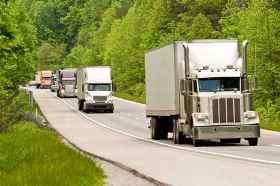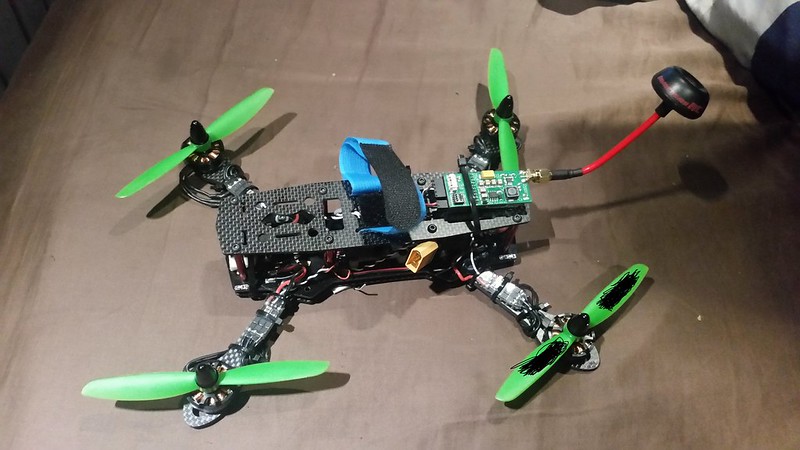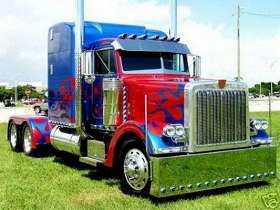Turning
Topic 12048 | Page 1

Go slowly. If you have room(no cars waiting to turn left) take all the space you can, both on the left hand side of your lane and going out far enough. My instructor liked it when we had to make a car back up to let us turn. : )

I keep hearing how backing up is one of the hardest things for new truck drivers to learn and I agree to an extent but backing up straight I learned pretty quickly the school I went to never taught me how to back up on an angle however when I took my road test the first time I didnt turn wide enough and my back tire rollled a curb and I automatically failed I retook my test and passed the second tine but still made quite a few mistakes. I know the training I had was very minimal and will need alot more training with any company that will take me on but I still worry about turning that big trailer properly
In my opinion, besides backing, making a proper turn, could be a drivers second biggest challenge. When I approach an intersection, I size it up for my set up to make the turn. If I'm going right, I crowd the left stripe and for a left, I crowd the right, I take all the available space I can. Use extreme care on your right turns, cars will try to sneak between the curb and your trailer, watch your mirrors.
Speed creates distance. Take your time making a turn and swing as wide as you need to, if a car is over the stop stripe, make them back up, I've been known to shut down an intersection or two, do not back up!!! I sat through two light cycles, until a car realized I wasn't moving for her and she needed to back up. And don't get in a hurry or let the motoring public rush you.

I keep hearing how backing up is one of the hardest things for new truck drivers to learn and I agree to an extent but backing up straight I learned pretty quickly the school I went to never taught me how to back up on an angle however when I took my road test the first time I didnt turn wide enough and my back tire rollled a curb and I automatically failed I retook my test and passed the second tine but still made quite a few mistakes. I know the training I had was very minimal and will need alot more training with any company that will take me on but I still worry about turning that big trailer properly
Hey Dave. One other suggestion that was somewhat beneficial to me when I started, albeit a bit different.
Pick an intersection frequented by trucks. Find a nearby parking spot (that's safe and public) and just watch. You will quickly see the basic mechanics used by truckers to safely execute a turn.
Have fun.

Thanks guys I always watch a truck turn every chance I get as for not allowing cars to try and swing in on you I was taught to stay in the right lane to avoid that but tgen I watch alotta truckers use that extra space for tge turn I worry about turning on those narrow streers that leave veey little room for trucks to navigate
HOS:
Hours Of Service
HOS refers to the logbook hours of service regulations.OWI:
Operating While Intoxicated

The most important thing when making turns, as someone already sortof pointed out, is being willing to block up everything to safely do so. Taking turns fast is dangerous. When people nail light posts with the trailer, that's why. They were going too fast and didn't have time to react to approaching it. So take it as slow as you need to. And yes, if someone is in your way of completing a turn, do not carelessly run a curb to complete it instead. Pull your bumper right in front of their's, they'll figure out the rest 100% of the time. If you want you can pull the brakes and crack open a soda while you wait. When you have the room to finish the turn, then continue. If i have to stop in front of a blocking car I actually make it a point to grab a soda and start drinking it, or grab a snack i have nearby, because the drivers will look you directly in the face. Looking confrontational isn't going to help anything, but showing that you're exactly where you want to be and are in no hurry gets them moving to solve the problem on their end.
Ever seen a super oversized load try to clear an intersection. It's a 15 minute shutdown of the traffic. You should be willing to do the same albeit a much shorter time, to safely navigate a turn no matter how bad. The worst turns i've had so far are in back streets of chicago, where i have to drive deep into the opposing lane of traffic, deep into the turns opposing lane of traffic, to barely avoid hitting light posts that are 6 inches or one foot from the corner of the turn. All the while, chicago traffic does not give the slightest **** what you need to do, so you have to make it happen. I Luckily i haven't had to go in manhattan or anywhere supposedly more difficult yet.
OWI:
Operating While Intoxicated

I have never been to Chicago but I live in NYC and there are sone vwry narrow roads that not only scare me as a possible future trucker but make me wonder how the hell they even get down those roads
HOS:
Hours Of Service
HOS refers to the logbook hours of service regulations.
I thought when turning right you leave the backend closest to the curb and your tractor closest to the center line? That way you have enough space to turn without clipping the corner curb and cars can't pass on the right while you turn.

I thought when turning right you leave the backend closest to the curb and your tractor closest to the center line? That way you have enough space to turn without clipping the corner curb and cars can't pass on the right while you turn.
There are turns so tight that you need the trailer further out to make it. As long as you are very attentive and patient about starting your turn and carefully make your intention clear without posing a danger someone will understand what's going on and hold off traffic. That is exactly a time when you may have to block oncoming traffic into everyone stops to let you go. I've had to do that only twice that I can recall, and on both occasions you can see where other trucks have marked up poles because they didn't navigate the turn correctly and hit them. Looking for damage caused by other trucks is one surefire way to know how cautiously you should approach a required maneuver.
TWIC:
Transportation Worker Identification Credential
Truck drivers who regularly pick up from or deliver to the shipping ports will often be required to carry a TWIC card.
Your TWIC is a tamper-resistant biometric card which acts as both your identification in secure areas, as well as an indicator of you having passed the necessary security clearance. TWIC cards are valid for five years. The issuance of TWIC cards is overseen by the Transportation Security Administration and the Department of Homeland Security.
I thought when turning right you leave the backend closest to the curb and your tractor closest to the center line? That way you have enough space to turn without clipping the corner curb and cars can't pass on the right while you turn.
The back end (tandems) will always take the shortest route to follow the cab. For either right or left turns in traffic lanes, start your entire truck on the outside edge of your lane (right turn = left edge of your lane). When clear, go straight until you can turn easily into the second lane over. (Two lane road? Hold on.) Turn into that second lane. Watch the "inside" mirror! When the tandems get around the corner, move to your desired lane as a regular lane change, signaling and all.
Here's my first serious 2-lane to 2-lane: Swift training. Do a page search for St Martinville to get to the entry.
A tight 2-lane turn is a killer! First, put your smile-face on, you'll need it. Again get the edge of your tires on the outside line. When you can, start your turn. Still head for the second lane, even if it's the incoming lane! The locals have seen this before and know what to do. Smile & wave as you give other drivers no choice but to back up. Keep your eye on the inside mirror! Old towns may have light posts right there. Keep moving into the second lane until you are positive the tandems will not destroy anything on the inside of the turn. Move slowly, you need to watch both forward and back. Smile! Wave "thank yous" to all.
Now drive away and hope you don't need to go back through this town.
Tandems:
Tandem Axles
A set of axles spaced close together, legally defined as more than 40 and less than 96 inches apart by the USDOT. Drivers tend to refer to the tandem axles on their trailer as just "tandems". You might hear a driver say, "I'm 400 pounds overweight on my tandems", referring to his trailer tandems, not his tractor tandems. Tractor tandems are generally just referred to as "drives" which is short for "drive axles".
Tandem:
Tandem Axles
A set of axles spaced close together, legally defined as more than 40 and less than 96 inches apart by the USDOT. Drivers tend to refer to the tandem axles on their trailer as just "tandems". You might hear a driver say, "I'm 400 pounds overweight on my tandems", referring to his trailer tandems, not his tractor tandems. Tractor tandems are generally just referred to as "drives" which is short for "drive axles".
New Reply:
New! Check out our help videos for a better understanding of our forum features

















Preview:








 TT On Facebook
TT On Facebook
I keep hearing how backing up is one of the hardest things for new truck drivers to learn and I agree to an extent but backing up straight I learned pretty quickly the school I went to never taught me how to back up on an angle however when I took my road test the first time I didnt turn wide enough and my back tire rollled a curb and I automatically failed I retook my test and passed the second tine but still made quite a few mistakes. I know the training I had was very minimal and will need alot more training with any company that will take me on but I still worry about turning that big trailer properly